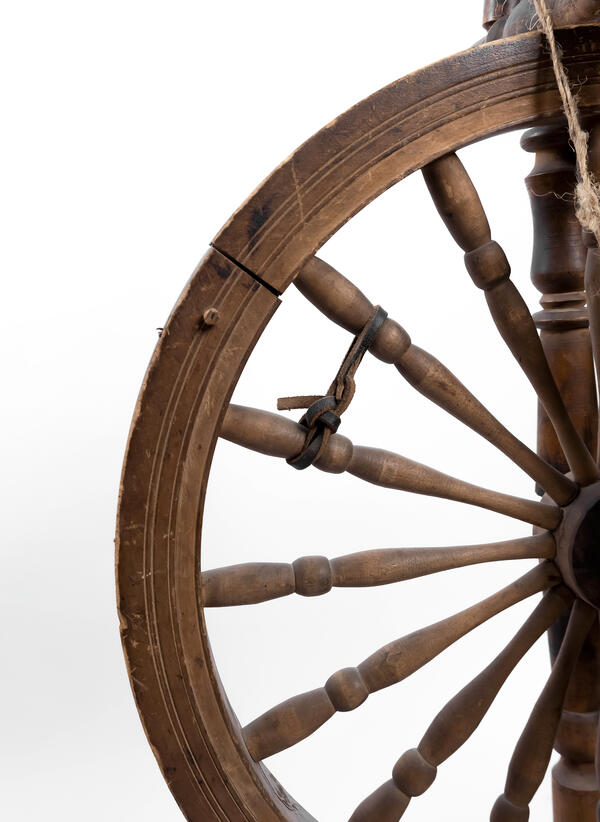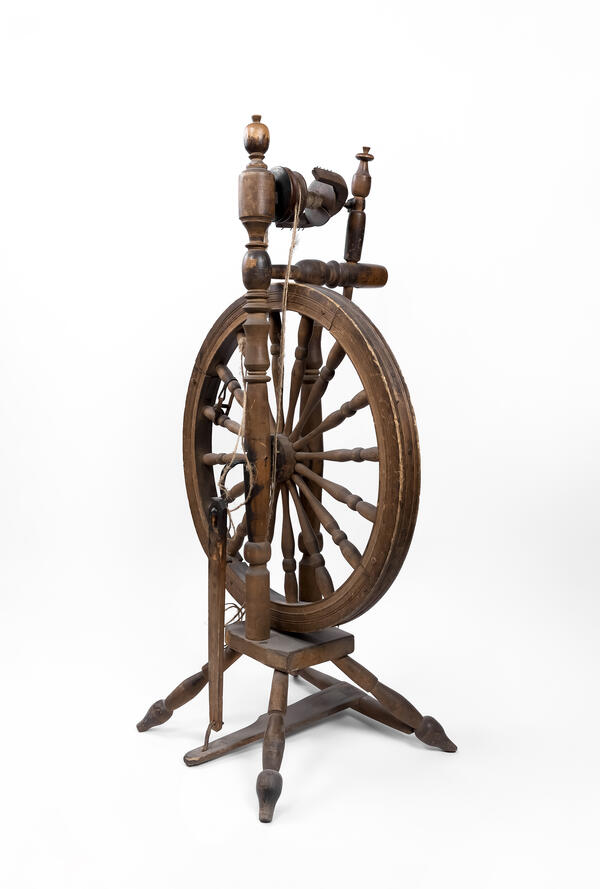The exhibition of the Vladimir Arseniev Museum of Far East History displays a spinning machine made of wood. A stand for its frame is mounted on four carved legs. The frame consists of two shaped posts with a crossbar on which the shuttle (spinning device) is fixed, rotating by means of a wheel. The wheel is fixed between the posts together with the pedal. The spinning wheel consists of a bench, a foot pedal (footrest), a frame, a wheel, a connecting rod and a rogach (spinning mechanism).
Spinning tools date back to ancient Rome, but in Russia the device had not only a practical but also a symbolic meaning: it was an expensive and special gift. For example, the groom often gave the bride a spinning wheel that he had made himself. He decorated it with various scenes, geometric patterns, images of birds and flowers.
The first spinning tools — distaffs — were manual. The spinner would sit at the lower part of the device, attach the fiber to the comb at the top and twist the short thread by hand. She would then attach it to a spindle — a smooth pointed wooden stick. The spinner held it in her right hand, rotating it and simultaneously pulling the fiber with her left hand, drawing it onto the spindle.
There were two types of distaffs depending on the shape of the upper part: one with a blade, a rectangular plate crowned by a row of vertical finials, and the other one, with a rake, which looked more like a wooden comb. They were widespread in different regions. The devices were made of wood. Different parts were often made from different woods. For example, the spindle was carved from birch, the bottom from aspen or linden, and the combs from hard woods such as ash or maple.
The spinning season began in
November and lasted all winter. The housewife spent long winter evenings using
a distaff and a spindle. A spinning device with a flywheel and a foot drive
began to be used by peasant women in the 19th century. Only women could spin,
but it was men’s duty to make and repair spinning wheels. Each Russian family
had its own spinning wheel, which always differed by one or several elements
from the neighbor’s. The production of spinning wheels continued until the end
of the 1930s, when factory-produced yarn became available.





